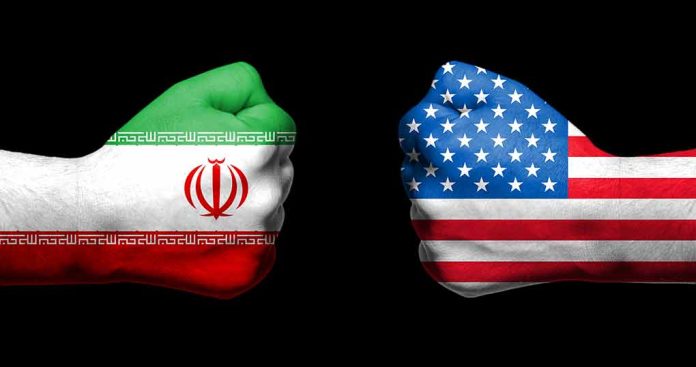
President Donald Trump executes a bold policy shift with a memorandum aiming to cripple Iran’s key economic lifeline and curb its nuclear potential, leaving many to wonder about the geopolitical ripples.
Key Takeaways
- U.S. President Donald Trump signed a memorandum reinstating severe sanctions on Iran.
- The strategy aims to reduce Iran’s oil exports to zero, a significant part of its economy.
- Iran’s uranium enrichment levels are reportedly close to weapons-grade despite their denials.
- China’s continued demand for Iranian oil poses challenges to U.S. sanctions.
- Trump expressed openness to negotiations but insists Iran cannot possess nuclear weapons.
Reinstating “Maximum Economic Pressure”
President Donald Trump signed an order reinstating the “maximum economic pressure” policy aimed specifically at diminishing Iran’s oil exports and stalling its nuclear program advancements. The memorandum directs the U.S. Treasury Department to impose sanctions on any violating individuals and entities. This move is part of Trump’s broader strategy to economically isolate Iran and promote international security by curbing nuclear proliferation. Since 2018, following the United States’ exit from the 2015 nuclear deal, sanctions targeting Iran’s energy sector have been in place.
China’s demand for Iranian oil, however, complicates this strategy. Chinese firms have increased their purchase of Iranian oil offered at a discount, despite U.S. sanctions, by utilizing alternative currencies like the yuan. Iran’s oil exports reach impressive figures, reportedly generating as much as $53 billion in 2023. Despite these robust numbers, during Trump’s first term, Iran’s oil income nearly plummeted to zero, illustrating the potency of the previous sanctions campaign.
US President Donald Trump says he will reinstate a 'maximum pressure' policy against Iran over allegations the Islamic republic is trying to develop nuclear weapons. He made the remark as he signed a memorandum reimposing a tough sanctions policy against Tehran
🇺🇸 🇮🇷 pic.twitter.com/Go2Eh7T82B— AFP News Agency (@AFP) February 4, 2025
Nuclear Concerns and Diplomatic Dynamics
The memorandum underscores the critical issue of Iran’s uranium enrichment efforts reportedly nearing 60% purity, alarmingly close to weapons-grade. Despite Tehran’s assertions that a nuclear weapon is not their goal, the U.S. remains skeptical about these claims. The reimposition of strict sanctions reveals the Trump administration’s staunch policy direction—denying Iran any nuclear weapon capability.
“With me, it’s very simple: Iran cannot have a nuclear weapon,” stated Trump.
President Trump has expressed openness to a deal that would entail reinforcing that Iran does not attain nuclear arms. Nevertheless, intensifying sanctions echo his long-held stance that economic pressure is an essential tool in counteracting Iran’s regional threats and supporting international stability.
Notable portions of Trump’s new national security memorandum reimposing maximum pressure on Iran:
-Its preamble notes Iran’s efforts “to embed sleeper cells in the Homeland to be activated in support of this terrorist activity” and reportedly to model nuclear weapons development… pic.twitter.com/BIaILUvk91
— Benjamin Weingarten (@bhweingarten) February 5, 2025
Global and Domestic Economic Implications
Sustaining these sanctions, particularly against Iran’s oil sectors, impacts both global and domestic economic landscapes. U.S. oil prices may reflect these pressures due to potential shifts in global supply and demand dynamics. While China provides a considerable market for Iran’s oil, circumventing U.S. sanctions continues to be a contentious international point, particularly when considering regions like Europe that face expiring mandates to activate “snapback” sanctions by 2025.
“On paper, China doesn’t take any Iranian oil, it’s always camouflaged in China’s customs data as Malaysian or [Emirati] crude oil,” said Gregory Brew, an Iran and energy analyst at the U.S.-based Eurasia Group.
This complex diplomatic and economic theater emphasizes the U.S.’s strategic use of sanctions, not only against Iran but in influencing allied and adversarial nation-states to align with its international security agendas. Given the ongoing geopolitical shifts, the eventual outcomes of these sanctions remain a crucial narrative in shaping global peace and stability.





